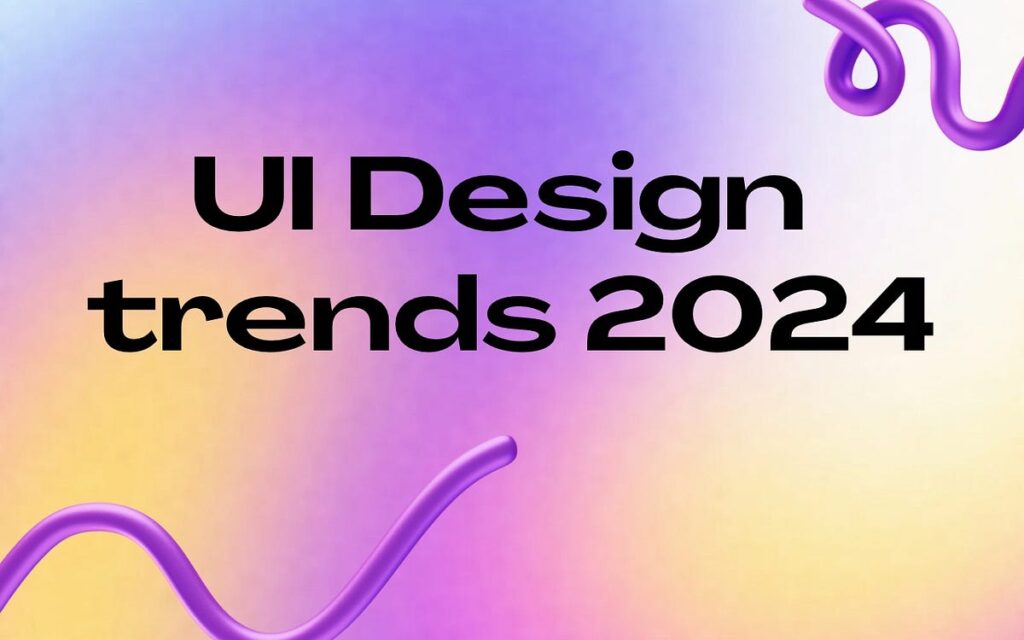Title: Navigating the Future: Top UI Design Trends of 2024
In the dynamic world of user interface (UI) design, staying abreast of the latest trends is crucial for creating intuitive, engaging, and user-centric digital experiences. As we venture into 2024, we’re witnessing the emergence of innovative UI design trends that push the boundaries of creativity and functionality. In this blog post, we’ll explore some of the top UI design trends shaping the industry in 2024 and how they’re revolutionizing the way we interact with digital interfaces.
- Neomorphic Design:
Neomorphic design, also known as soft UI, is gaining momentum in 2024 with its subtle shadows, soft edges, and tactile aesthetics. Inspired by skeuomorphism and flat design, neomorphic interfaces mimic the appearance of physical objects, creating a sense of depth and realism. Neomorphic design adds visual interest and sophistication to user interfaces, making them feel more intuitive and immersive. By leveraging light and shadow, designers can create interfaces that are both visually striking and user-friendly. - Augmented Reality (AR) Interfaces:
With the advancement of augmented reality (AR) technology, AR interfaces are becoming increasingly prevalent in 2024. AR interfaces overlay digital content onto the physical world, creating interactive and immersive experiences. From virtual try-on for e-commerce to interactive navigation for maps and directions, AR interfaces offer endless possibilities for enhancing user interactions and engagement. By blending the virtual and physical realms, AR interfaces provide users with new ways to interact with digital content in real-world contexts. - Voice User Interfaces (VUIs):
Voice user interfaces (VUIs) are transforming the way we interact with technology in 2024, offering hands-free and natural language interactions. With the rise of virtual assistants and smart speakers, VUIs are becoming an integral part of everyday life. In UI design, VUIs present new opportunities for designing conversational interfaces that are intuitive, efficient, and accessible. By leveraging speech recognition and natural language processing technologies, designers can create VUIs that understand user intent and provide personalized responses in real-time. - Gesture-Based Navigation:
Gesture-based navigation is gaining traction in 2024 as touchscreens become more prevalent across devices. From smartphones and tablets to wearable devices and smart appliances, gesture-based interactions allow users to navigate interfaces with natural and intuitive gestures. Swipe, pinch, and tap gestures replace traditional buttons and menus, offering users a more fluid and immersive navigation experience. Gesture-based navigation simplifies interactions and reduces cognitive load, making interfaces more user-friendly and efficient. - Dark Mode:
Dark mode interfaces are experiencing a surge in popularity in 2024, driven by their sleek aesthetics and potential energy-saving benefits. Dark mode interfaces use dark backgrounds with light text and accents, reducing eye strain and enhancing readability, especially in low-light conditions. Dark mode not only improves visual comfort but also conserves battery life on devices with OLED screens. By offering dark mode options, designers can cater to users’ preferences and provide more personalized experiences. - Microinteractions and Animations:
Microinteractions and animations are becoming increasingly prominent in UI design in 2024, adding delight and personality to user interfaces. From subtle hover effects and button animations to loading spinners and transition effects, microinteractions enhance usability and engagement by providing feedback and guidance to users. Thoughtfully designed animations create a sense of continuity and flow, making interfaces feel more responsive and dynamic. By incorporating microinteractions and animations, designers can create more immersive and memorable user experiences. - Accessibility-First Design:
Accessibility-first design is a growing priority in UI design in 2024, as designers strive to create interfaces that are inclusive and accessible to users of all abilities. By following accessibility guidelines and best practices, designers can ensure that interfaces are usable and navigable for users with disabilities. This includes providing alternative text for images, using semantic HTML markup, and implementing keyboard navigation options. Accessibility-first design not only benefits users with disabilities but also improves usability and user experience for all users.
In conclusion, the UI design trends of 2024 reflect a blend of technological innovation, user-centricity, and aesthetic sophistication. By embracing these trends and incorporating them into their designs, designers can create user interfaces that are not only visually appealing but also intuitive, engaging, and accessible. As technology continues to evolve, UI design will play an increasingly critical role in shaping the way we interact with digital interfaces in the years to come.
